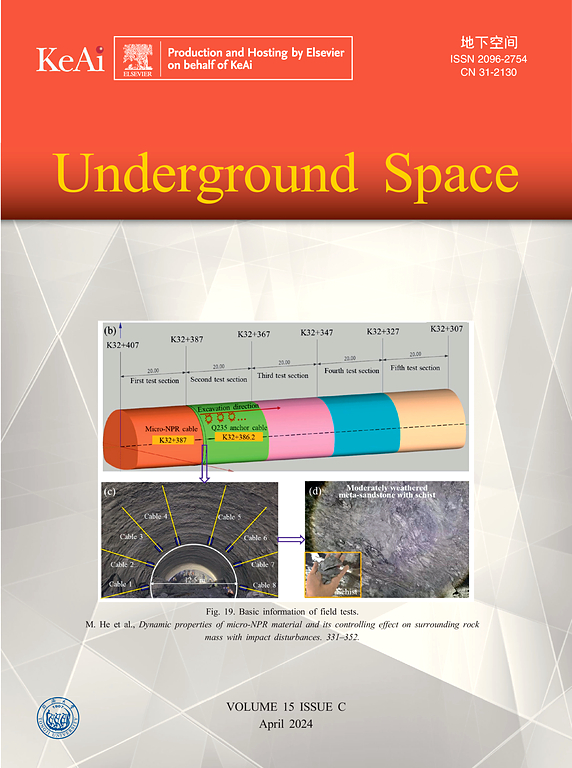大型浅埋双隧道开挖对高速铁路桥梁的影响及防护措施——以某高速铁路桥梁为例
IF 8.3
1区 工程技术
Q1 ENGINEERING, CIVIL
引用次数: 0
摘要
本案例研究考察了中国苏州的一个标志性工程项目,该项目涉及在一座现役高速铁路(HSR)桥下建造两条大直径(13.2米)盾构隧道。这个开创性的项目在中国和世界上都是第一个。进行了先进的数值模拟,以严格评估施工风险。为了确保现有高铁桥梁的运行安全,采用了一种创新的保护系统,主要由节段钢套管混凝土桩屏障组成。在整个保护和隧道施工阶段,策略性地部署了一个全面的监测传感器网络来跟踪土壤、桩屏障和墩的位移。仿真结果表明,在不采取防护措施的情况下,隧道开挖导致桥墩沿桥位移达3.1 mm,超过了规定的最大允许位移2mm。监测数据显示,保护方案安装过程中桥墩最大位移限制在0.5 mm。有了这些保护措施,每个隧道阶段的桥墩位移始终保持在0.5毫米以下,与未受保护的情况相比,大约减少了80%,从而确保了高铁桥梁的持续安全。本文章由计算机程序翻译,如有差异,请以英文原文为准。
Impact of a large and shallow twin-tunnel excavation on a high-speed railway bridge and related protective measures: A case study
This case study examines a landmark engineering project in Suzhou, China, involving the construction of two large-diameter (13.2 m) shield tunnels beneath an active high-speed railway (HSR) bridge. This pioneering project is the first of its kind in both China and the world. Advanced numerical simulations were conducted to rigorously assess construction risks. To ensure the operational safety of the existing HSR bridge, an innovative protective system, consisting primarily of segmental steel casing concrete pile barriers, was employed. A comprehensive network of monitoring sensors was strategically deployed to track soil, pile barrier, and pier displacements throughout both the protective and tunnelling phases. Simulation results indicated that tunnelling without protective measures could cause pier displacements of up to 3.1 mm along the bridge—exceeding the maximum allowable displacement of 2 mm in accordance with regulations. Monitoring data revealed that the maximum pier displacement during protective scheme installation was limited to 0.5 mm. With these protective measures, pier displacement during each tunnelling phase remained consistently below 0.5 mm, representing an approximate 80% reduction compared to the unprotected scenario, thereby ensuring the continued safety of the HSR bridge.
求助全文
通过发布文献求助,成功后即可免费获取论文全文。
去求助
来源期刊

Underground Space
ENGINEERING, CIVIL-
CiteScore
10.20
自引率
14.10%
发文量
71
审稿时长
63 days
期刊介绍:
Underground Space is an open access international journal without article processing charges (APC) committed to serving as a scientific forum for researchers and practitioners in the field of underground engineering. The journal welcomes manuscripts that deal with original theories, methods, technologies, and important applications throughout the life-cycle of underground projects, including planning, design, operation and maintenance, disaster prevention, and demolition. The journal is particularly interested in manuscripts related to the latest development of smart underground engineering from the perspectives of resilience, resources saving, environmental friendliness, humanity, and artificial intelligence. The manuscripts are expected to have significant innovation and potential impact in the field of underground engineering, and should have clear association with or application in underground projects.
 求助内容:
求助内容: 应助结果提醒方式:
应助结果提醒方式:


